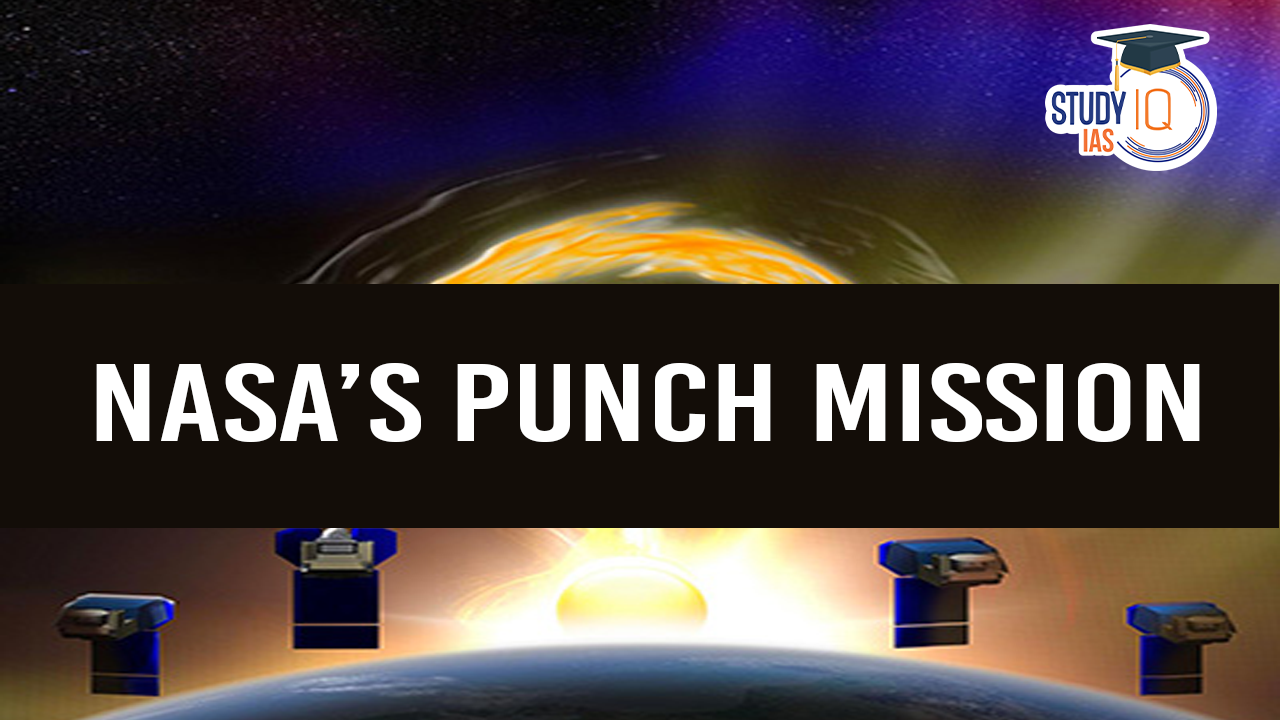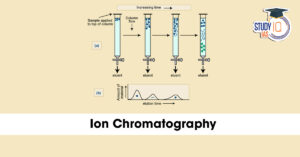Table of Contents
Context: NASA’s solar mission is scheduled for launch on March 6, 2025, from Vandenberg Space Force Base, California.
About NASA’s PUNCH Mission
Polarimeter to Unify the Corona and Heliosphere (PUNCH) is a NASA solar mission which aims to study the Sun’s outer atmosphere (corona) and its interaction with the solar wind.
Objectives of the PUNCH Mission
- Study the Sun’s Corona: Observe the structure and dynamics of the Sun’s outer atmosphere.
- Understand Solar Wind: Track solar wind expansion and acceleration as it moves toward Earth.
- Analyze Coronal Mass Ejections (CMEs): Provide real-time imaging of solar storms that can impact Earth’s satellites and power grids.
- Improve space weather forecasting.
Satellite Constellation
- PUNCH consists of four small identical satellites, each suitcase-sized.
- These satellites will work together to continuously image the solar corona and solar wind.
- The satellites will be placed in a sun-synchronous polar orbit around Earth.
Advanced Imaging Technology
- Wide-Field Imagers: Capture the Sun’s corona and track solar winds as they move through space.
- Polarization Measurements: Help understand the magnetic structure of solar wind.
What is the Solar Cycle?
- The solar cycle is an 11-year cycle of the sun’s magnetic field and activity.
- During this cycle, the number of sunspots on the sun’s surface changes from a minimum to a maximum and back again.
How does the Solar cycle work?
- The Sun has a magnetic field with north and south poles, similar to a bar magnet.
- This field is generated by the movement of electrically charged particles within the Sun.
- Approximately every 11 years, the Sun’s magnetic poles switch places, marking the start of a new solar cycle.
Role of Sunspots in Tracking the Solar Cycle
- Sunspots are dark, cooler regions on the Sun’s surface where the magnetic field is particularly strong.
- Scientists track the solar cycle by counting the number of sunspots:
- More sunspots = Solar Maximum
- Fewer sunspots = Solar Minimum
| Phases of the Solar Cycle |
|
Why Are More Solar Missions Being Launched Now?
- Current solar observations suggest that the Sun is nearing its solar maximum, although official confirmation is awaited.
- NOAA (National Oceanic and Atmospheric Administration) reports that solar activity has been above normal since May 2022 and continues to remain high in 2024.
- The next intense solar activity will not occur until 2035-2036, making this the best window for launching solar missions.


 Advanced Air Defence Radars: Types, Comp...
Advanced Air Defence Radars: Types, Comp...
 Ion Chromatography, Working and Applicat...
Ion Chromatography, Working and Applicat...
 Broadly Neutralising Antibodies (bNAbs):...
Broadly Neutralising Antibodies (bNAbs):...

























